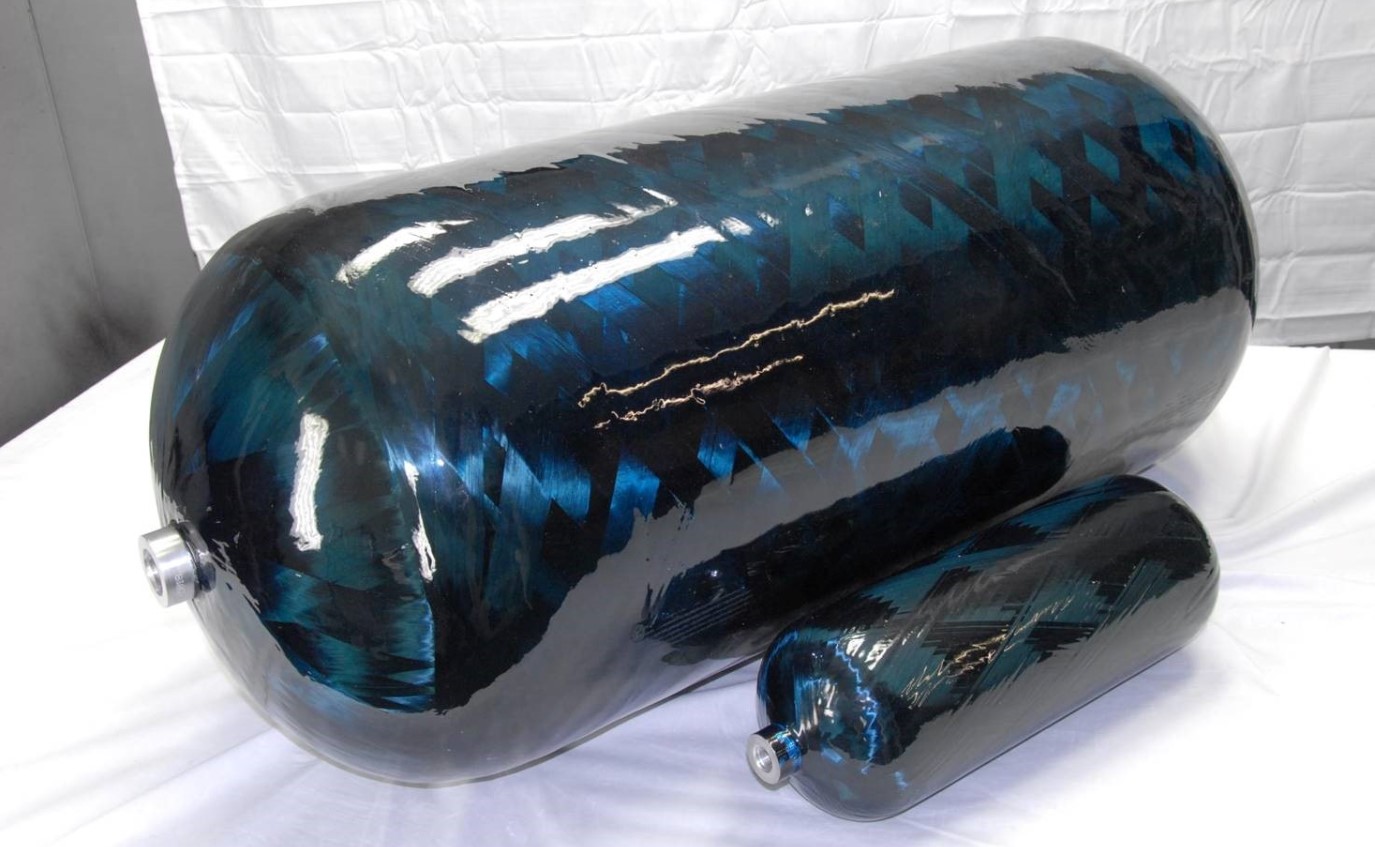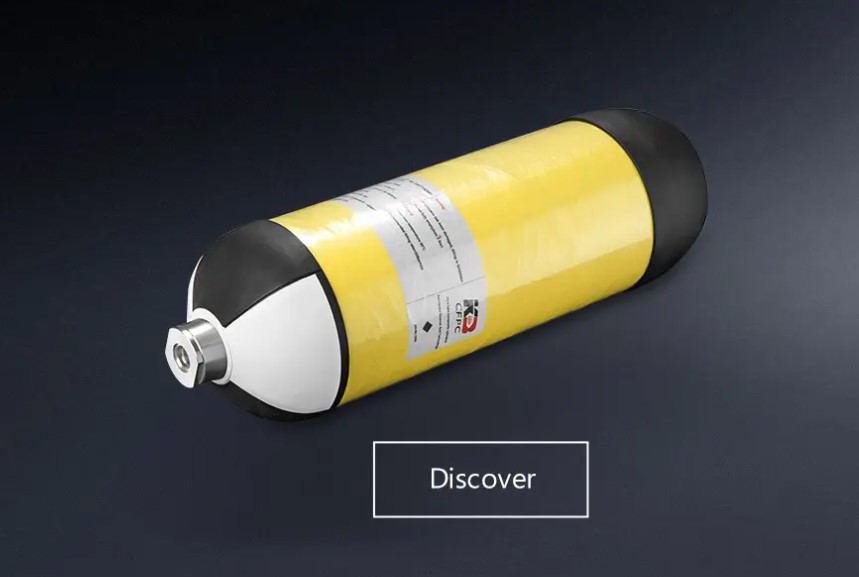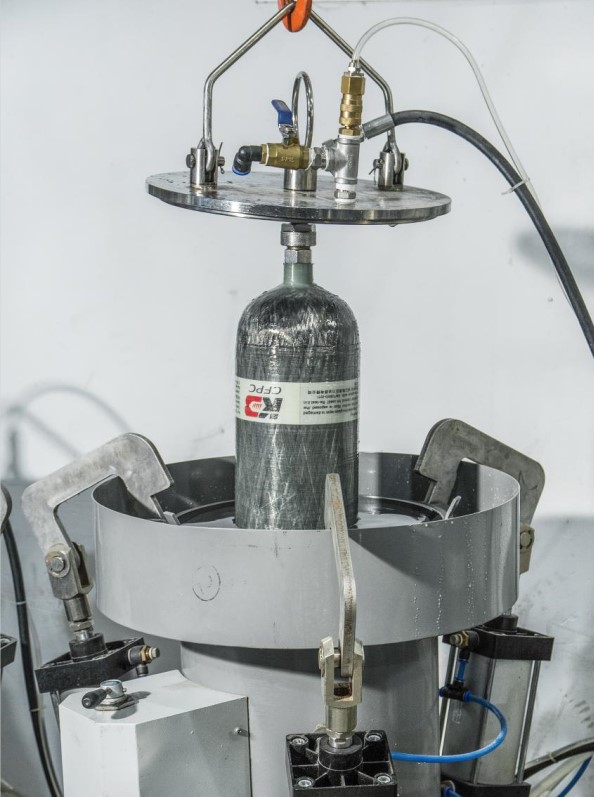Carbon fiber composite tanks have become increasingly popular in modern gas storage applications, including hydrogen. Their lightweight yet strong construction makes them ideal for applications where both weight and pressure performance matter, such as in vehicles, drones, backup energy systems, and industrial gas transport. This article explores how carbon fiber tanks can be used to store hydrogen, what working pressures are appropriate, safety considerations, and how to maintain these tanks properly.
Why Use Carbon Fiber Composite Tanks for Hydrogen?
Hydrogen is a very light gas with high energy content per kilogram, but it also requires high pressure to be stored in a compact form. Traditional steel tanks are strong, but they are also heavy, which is a drawback for mobile or transport applications. Carbon fiber composite tanks offer a good alternative:
- Lightweight: These tanks can be up to 70% lighter than steel tanks, which is important in mobile applications like vehicles or drones.
- High Pressure Capability: Carbon fiber composite tanks can handle high pressures, which makes them suitable for compressing hydrogen into smaller volumes.
- Corrosion Resistance: Unlike steel, carbon composites are not prone to corrosion, which is important for storing hydrogen.
Typical Working Pressures for Hydrogen Storage
The pressure at which hydrogen is stored depends on the application:
- Type I steel tanks: Typically not used for hydrogen due to weight and fatigue issues.
- Carbon fiber composite tanks (Type III or IV): Commonly used for hydrogen, especially in automotive and industrial applications.
In hydrogen storage:
- 350 bar (5,000 psi): Often used in industrial or heavy-duty applications.
These pressures are significantly higher than those for air (typically 300 bar) or oxygen (200 bar), which makes carbon fiber’s high strength-to-weight ratio even more valuable.
Key Considerations for Hydrogen Storage
Hydrogen has unique properties that make safety and material selection critical:
- Hydrogen Embrittlement:
- Metals like steel can become brittle in the presence of hydrogen over time, especially under high pressure. Composite materials do not suffer from hydrogen embrittlement in the same way, giving carbon fiber tanks a clear advantage.
- Permeation:
- Hydrogen is a very small molecule and can slowly pass through some materials. Type IV tanks use a polymer liner inside the carbon fiber shell to minimize hydrogen permeation.
- Fire Safety:
- In the event of fire, tanks should be equipped with pressure relief devices (PRDs) to prevent explosions by releasing gas in a controlled way.
- Temperature Effects:
- High and low temperatures can affect tank pressure and liner performance. Proper insulation and usage within certified temperature ranges are essential.
Maintenance and Inspection Tips
To ensure long-term performance and safety of carbon fiber hydrogen tanks, regular care and inspections are necessary:
- Visual Inspection:
- Check the outer surface for cracks, delamination, or impact damage. Even small impacts can compromise the tank’s integrity.
- Valve and Fitting Check:
- Make sure all valves, seals, and regulators are functioning properly and not leaking.
- Service Life Awareness:
- Carbon fiber composite tanks have a defined service life, often around 15 years. After that period, they should be retired even if they appear fine.
- Avoid Overfilling:
- Always fill the tank to its rated working pressure, and avoid over-pressurization, which can weaken the composite over time.
- Certified Refilling:
- Hydrogen refueling should be performed using certified equipment and by trained personnel, especially at high pressures.
- Environmental Storage:
- Store tanks in a dry, shaded area away from direct sunlight or heat sources. Avoid freezing conditions unless the tank is certified for such use.
Use Case Examples
Carbon fiber hydrogen tanks are already widely used in:
- Fuel cell vehicles (cars, buses, trucks)
- Hydrogen drones and aircraft
- Backup power and stationary energy systems
- Portable hydrogen fuel units for industrial or emergency uses
Summary
Carbon fiber composite tanks are an excellent choice for hydrogen storage due to their strength, low weight, and resistance to hydrogen-specific issues like embrittlement. When used at proper pressures such as 350bar, and with correct maintenance, they offer a practical and safe way to handle hydrogen in various applications. However, attention must be paid to usage conditions, tank lifetime, and safety protocols.
As hydrogen becomes more central to clean energy technologies, especially in transport and industrial backup systems, the role of carbon fiber tanks will continue to grow, offering a reliable and efficient solution for high-pressure hydrogen storage.
Post time: May-07-2025



